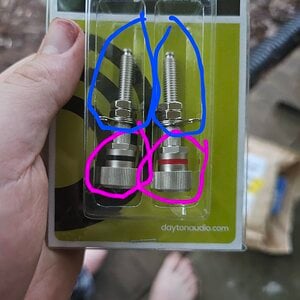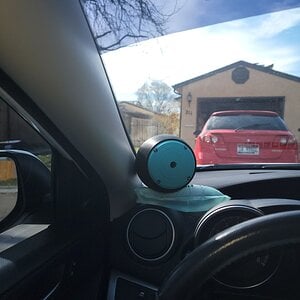Ridinhi 5,000+ posts
CarAudio.com Veteran
I think I have my tuning down now. I should be at around 30 HZ. I will do a little weighing of my washers and see what I’m tuned at, but it sounds pretty good. Did a couple of videos. 3 of my screws are basically just floating, which you can hear a little in the video. This is what people mistake for ”rattling” often. It’s actually air squeaking out of the hole. The video makes it sound even more like a rattle. i used small 1.5 inch drywall screws, but now that tuning is almost done those will all be replaced with larger screws to plug all the leaks. I took the radiators out 9 times today and changed weights and played with tones and music.
What size is the enclosure?


